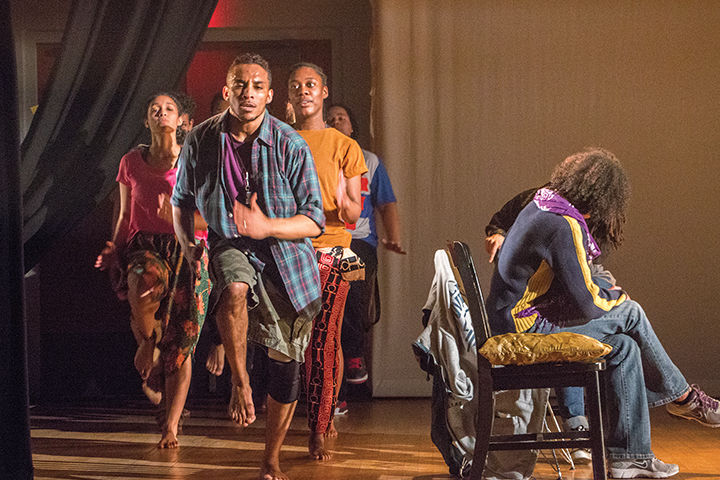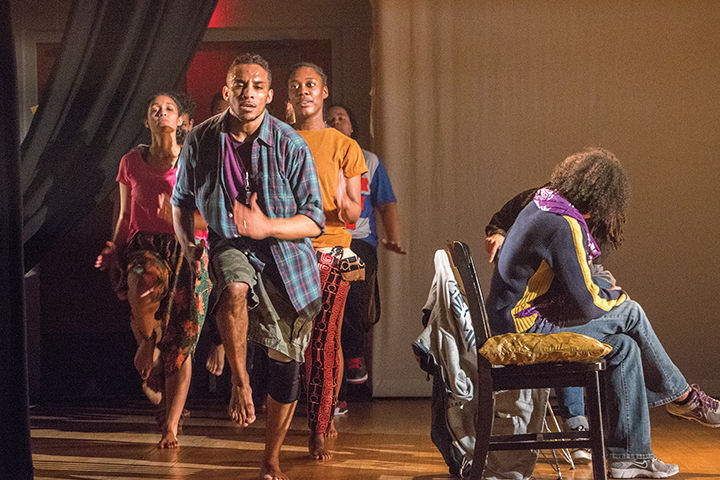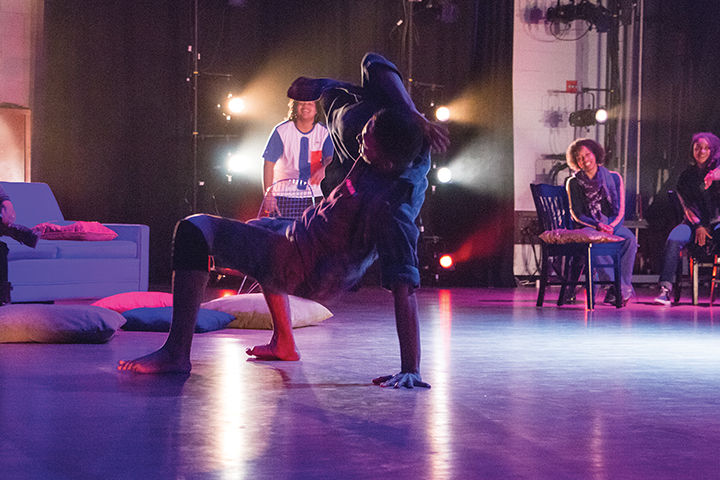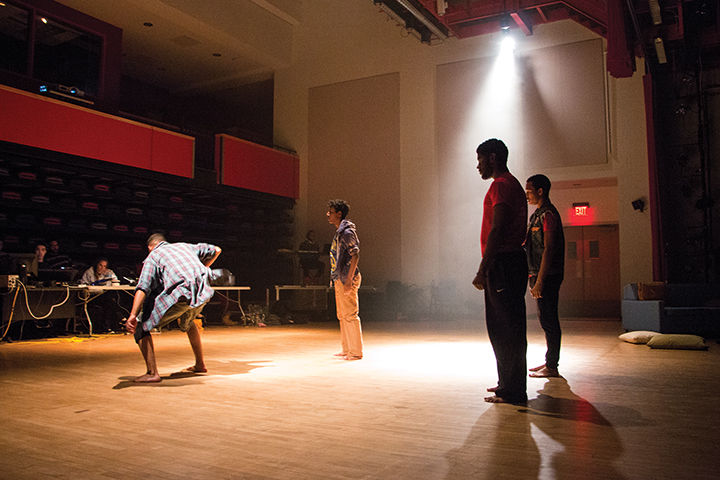Streamers and posters lined white cinder-block walls. A steady stream of people crowded into a narrow, dimly lit hallway. Bass thumped and lights flashed from the doorway ahead.
“Can I get your hand, man?” asked someone with a stamper blocking the entrance. Freshly inked, the audience walked into the theater.
The past weekend’s Second Season production of Wake Up!, which ran at the Clarice Smith Performing Arts Center, was an exploratory mash-up of dance and theater based on Spike Lee’s film School Daze. It invited its sold-out audience to bump, grind and reflect on the state of race at this university.
“The audience is with us on this journey,” said Meghan Abadoo, a dance graduate student and Wake Up! co-director.

Wake Up! Production
Abadoo conceived the idea after she fell in love with the song “Good and Bad Hair” from the original School Daze, which depicts life at a fictitious historically black college. The song represents a struggle between what is natural and what is considered “normal” — coiled hair versus straight hair.
“I first saw this film when I was 5 or 6, and [the “Good and Bad Hair” scene] was so inspiring to me as a young black girl,” Abadoo said.
After plans to receive the screenplay and rights to produce School Daze fell through, she invited university alumnus Vaughn Midder to help create the production. The pair decided to adapt the 1988 indie favorite to fit a typical homecoming weekend at this university.
Midder, who modified the screenplay for the site-specific performance, wanted to focus on the intersection of race and class for a black student at a major public university.
“My first draft of the play was sort of a rewriting in modern-day, but after reading it over, we realized that wasn’t our intention,” said Midder, who graduated from the theater school. “We picked out the things that are most provocative and the more we talked about it, about the show, we started to get a much greater vision of School Daze today.”

Wake Up! Production
Abadoo built the storyline of Wake Up! around her strengths as a choreographer. The musical moments separated different dialogue-heavy vignettes, each of which showcased a different element of the students’ experience: the black student union failing to meet the needs of its members, a fight that breaks out at a racially unbalanced fashion show, a “juke-joint” talent show and two male students arguing about what it truly means to be black at a predominantly white school.
“When the dialogue occurs, I wanted it to be right on point,” Abadoo said. “In one act, you’ve got to say a lot. You’ve got to say it all.”
The interactive performance balanced the silly with the serious. The opening scene was not a scene at all, but a house party in full swing, featuring a DJ and pulsing strobe lights — as entertaining as an actual rager.
“Part of [the dancing] was up to us and the other part was choreography,” said Olivia Lynes, a dance major and a dancer in the show. “It’s broken down for the audience to enjoy and play with as well.”
Audience members danced throughout the performance to classics off the School Daze soundtrack, giving the whole production a surreal, movie-in-real-life edge. The time-twisting scenes of different collegiate goings-on showcased the boiling issues that seem stark and unsettling once the sun rises after the night of the party.
Though at times disorienting, dancing to “Da Butt” (as silly as it was) served as an oddly sobering experience. In Wake Up!, once the music stopped and the dancing ended, the reality of human discourse slammed back with full force, especially in the confusing yet passionate throes of college advocacy.
Wake Up! used movement as a mouthpiece, transforming Spike Lee’s larger-than-life indie musical into a nostalgic, hip-hop-tinged portrait of the black college experience.
The cast members of Wake Up! production perform a choreographed dance scene led by Chris Law, a first-year dance graduate student, during the rehearsal on Wednesday, March 25.
Chris Law, a first-year dance graduate student performs during the Wake Up! production rehearsal on Wednesday, March 25.
The cast members of Wake Up! production act out a scene during the rehearsal on Wednesday, March 25.






